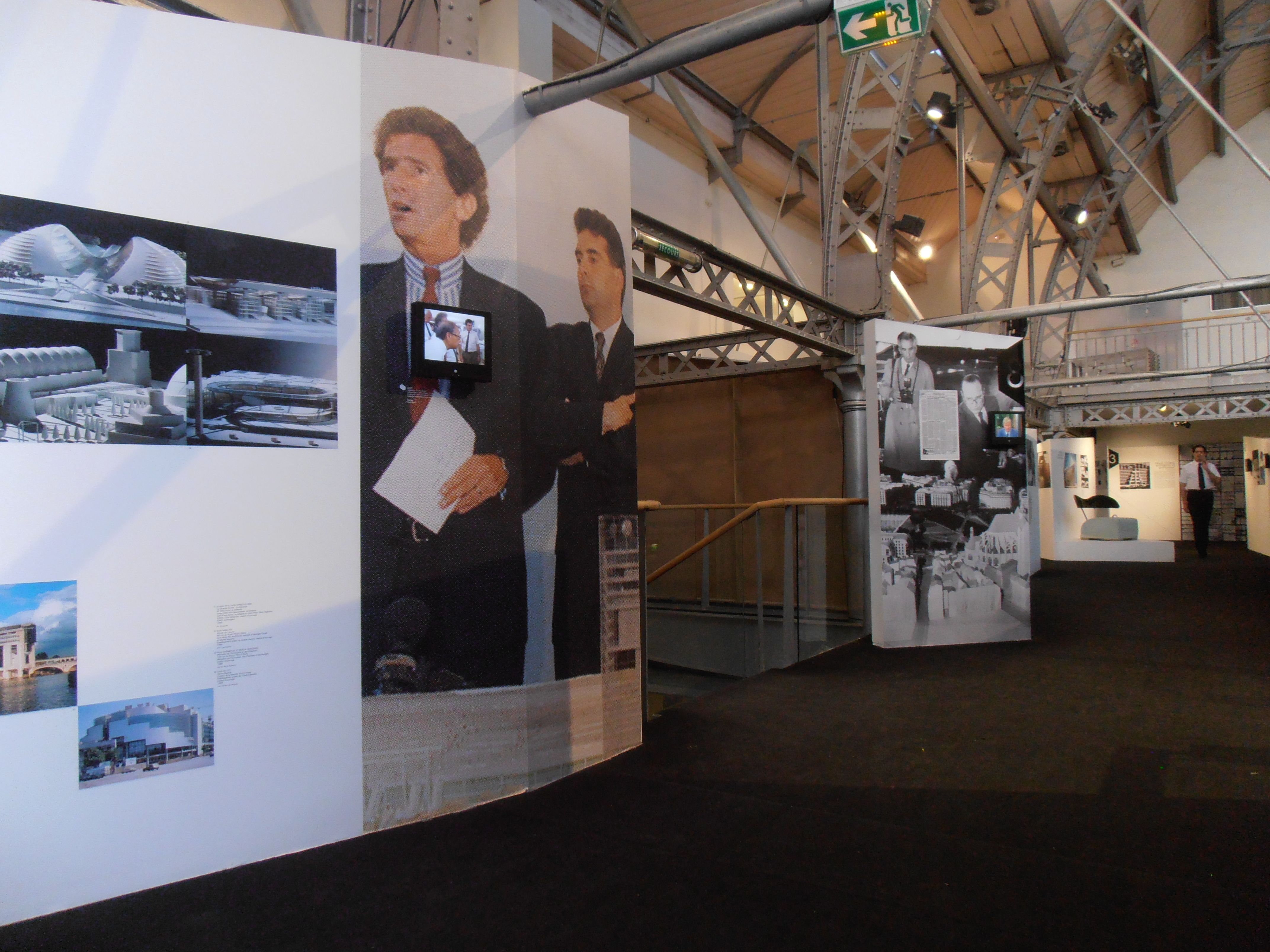Until October 2nd, 2011, the Pavillon de l’Arsenal is presenting Architecture 80, a “metropolitan chronicle” of architectural events in the 1980s.

The 80s started fast in Paris, with two major political changes. Jacques Chirac had been elected in 1977 as Paris’s first mayor in more than one hundred years, and began implementing his projects for the city. In 1981, François Mitterand was elected President of France, with a desire to mark his tenure through building, in stark contrast to the preservationist bent of his predecessor, Valéry Giscard d’Estaing.
Like Napoleon III before him, Mitterand started with a project for the Louvre Palace. The first step required some political authority: he kicked the Ministry of Finance out of their prestigious quarters in the Louvre, in the very center of the city, and sent them eastward to a new building in Bercy in the much less prestigious east of the city. He then selected Ieoh Ming Pei to design the new, enlarged Louvre, bringing together all the buildings of the complex. It was interesting to be reminded in the Pavillon de l’Arsenal exhibition that the concern at the time as primarily about the reaction to a modern, even high-tech, piece of architecture in the middle of the Louvre’s Cour Napoléon. Today some criticisms of the complex persist, but they are completely unrelated to the stylistic expression of the pyramid.
The 80s were filled with many projects that grabbed attention at the time, including – to name a few – Christian de Portzamparc’s Dance School in Nanterre, Paul Chemetov and Borja Huidobro’s Finance Ministry at Bercy, the Palais Omnisport Paris-Bercy by Michel Andrault and Pierre Parat, the Cité des Sciences et de l’Industrie at La Villette by Adrien Fainsilber, the la Villette Park by Bernard Tschumi, the Grande Arche de la Défense by Johann Otto von Spreckelsen, the children’s hospital by Pierre Riboulet and the new neighborhood of Bercy coordinated by Jean-Pierre Buffi. There were also some audacious but dubious public art projects, such as Daniel Buren’s columns in the courtyard of the Palais Royal.
This retrospective allows us to look back and take note that while some buildings have aged well, others have not. The Institut du Monde Arabe by Jean Nouvel and Architecture Studio, for example, is as compelling as it was in 1987, if not more so. The Opéra Bastille by Carlos Ott, on the other hand, was a weak building in 1983 and has done nothing but slide further into ignominy since then. In my opinion, much of the architecture of Henri Ciriani, seen to be very stylish at the time, has aged poorly. On the other hand, the work of Antoine Grumbach in the 80s turned out to be ahead of its time.
The decade ended with the 36-year-old Dominique Perrault winning the competition, in 1989, for the new Bibliothèque Nationale de France, intended to be a new multi-media concept of a library for the 21st century. Perrault’s project, delivered in 1995, is interesting because it still divides as it did when it was opened, and for exactly the same reasons. I do have to say that my impression is that, as a monument, it has been fully adopted by Parisians, especially as the neighborhood around it has filled out.
Architecture 80 is a splendid opportunity to look back on a time when not everything was even close to having been done right, but where architecture and urbanism were at the center of public debate and when a city genuinely tried to use ambition in those fields to project itself into the future.



Le courrier des architectes has published a piece on Carlos Ott, discussing his victory in the Bastille Opera competition and his work since then http://www.lecourrierdelarchitecte.com/article_1718